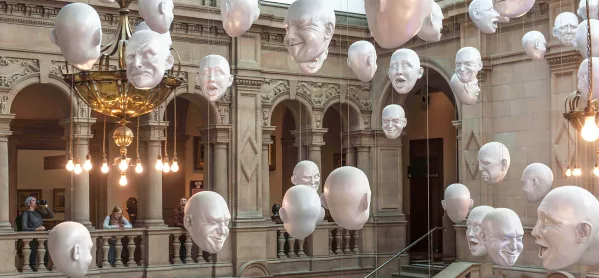Students wandering around Kelvingrove Art Gallery and Museum, in pairs, interacting with exhibits using what was then cutting-edge technology, was, back in the day, the Curriculum for Excellence made real.
For years, I took all the S1 students from my school to this special place in Glasgow. Although it is only a couple of miles across the river, it always surprised me how many had never visited Kelvingrove - hadn’t seen the heads, peered up at the Dalí painting or experienced that unique “aroma”.
Sadly, though, this 2007 cutting-edge technology stopped working when replacement batteries became difficult to source.
For most young children, visiting a museum entails being dragged around, following a teacher or parent, in the faint hope of an ice cream in the café afterwards, rather than a unique exploration, a discovery and a viewing of new, unimagined things.
Kelvingrove is a special place, being both a museum and an art gallery. It is intrinsically “Glasgow” in a building - the high art, the surprising, the kitsch, the priceless painting. All my life it has marked the centre of the city, Glasgow radiating outwards from it.
Cultural capital is what the people who built Kelvingrove were enabling; the idea, after it opened in 1901, being that everyone could freely visit this spectacular building and its contents and see things far removed from their daily lives; to learn, be inspired and feel surprised. It’s the same energy that built Glasgow’s parks and libraries, that powerful municipal spirit.
Making school museum visits magical
That was a long time ago, though, before the internet, TikTok and Snapchat, never mind the constant struggle of curriculum versus extracurricular. Regardless, to me, visits to museums must still be part of a school offer in 2023.
Museum visits, like all school trips, are anchors for learning. Teachers can plan education around a visit, so that rather than the learning experience just being on the “big day”, these day visits can be the beginning or, indeed, a culmination of learning.
Glasgow Museums used to run a workshop entitled “What is Scottish?”, which fitted our S1 religious and moral education curriculum perfectly by using museum artefacts to enable students to learn more about citizenship. For most secondary students, I believe it is vital that visits are student-curated, that they are about the discovery of museum and art gallery exhibits and an enabler of pupil interaction with objects and paintings.
One of the things that has given me the most joy regarding taking school groups to Kelvingrove is when students have told me in the weeks afterwards that they have gone back with their parents - the child taking the role of the guide.
In a school like Bellahouston Academy, where 64 per cent of our students are black, Asian and/or minority ethnic and many are new to Scotland, museums enable a wider understanding of Glasgow, and the value of culture palaces like Kelvingrove cannot be underestimated.
Now, “My Stories” - a digital resource created by young people for young people at risk of disengagement from secondary school and further education - has been developed with the help of students from schools like mine, colleges and youth groups across Glasgow. It’s a way of helping pupils to creatively express their thoughts about and responses to Kelvingrove. It’s fun, social and designed to help young people work in teams.
It is yet another of those anchors for learning being cast in a museum.
Murdo Macdonald is depute headteacher at Bellahouston Academy in Glasgow
My Stories is free and open to schools and colleges, with experiences lasting around 1 hour and 30 minutes. For more information click here




